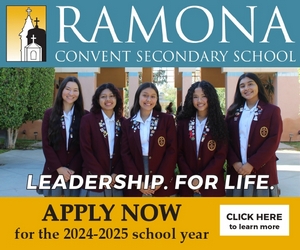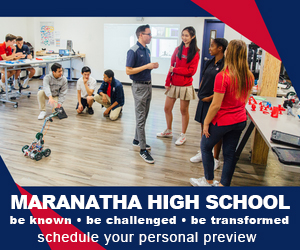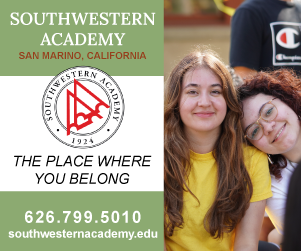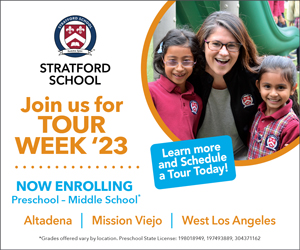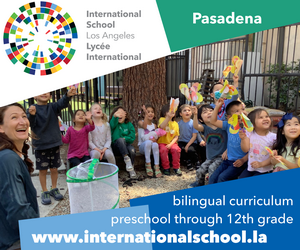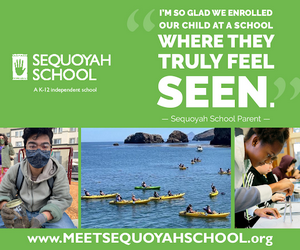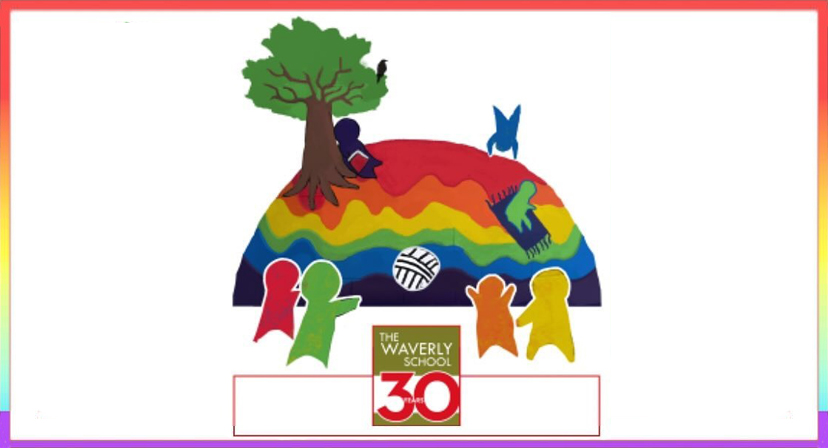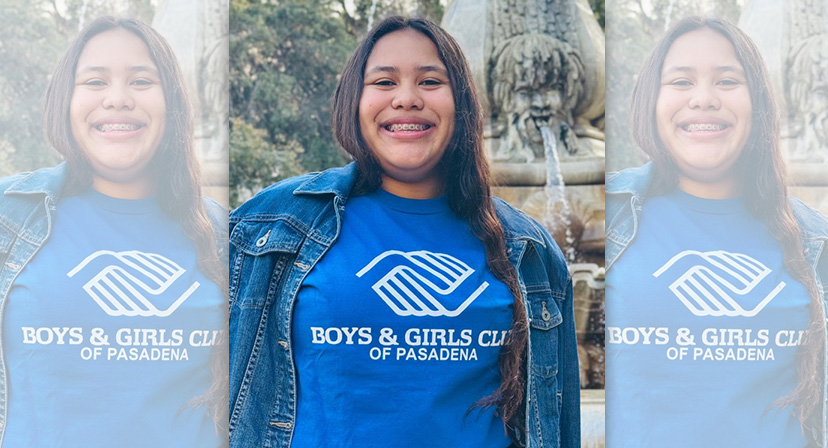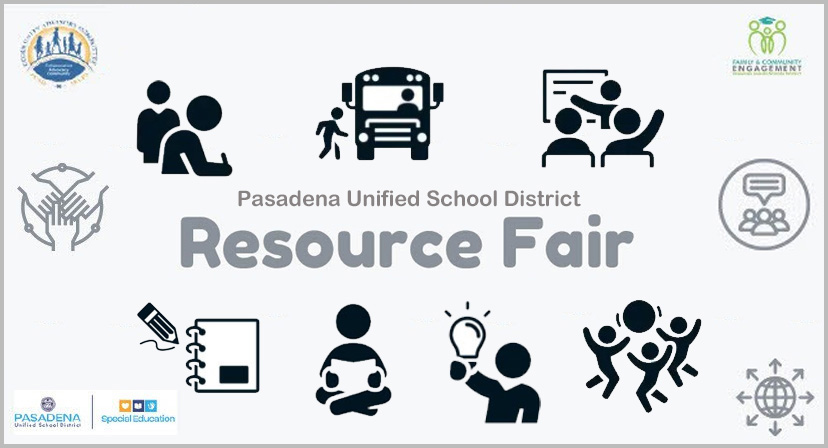Continuing The Adventure: Denis Belliveau Inspiring Students’ Dreams
 When Filmmaker, author, and explorer Denis Belliveau visited Clairbourn to work with students, he left behind a group of young people more inspired than ever to explore the world, be curious about life, and follow their dreams. In 2009, PBS aired Belliveau’s documentary, “In the Footsteps of Marco Polo,” about visiting every location from Polo’s 24-year journey through the Mongolian Empire over 700 years ago.
When Filmmaker, author, and explorer Denis Belliveau visited Clairbourn to work with students, he left behind a group of young people more inspired than ever to explore the world, be curious about life, and follow their dreams. In 2009, PBS aired Belliveau’s documentary, “In the Footsteps of Marco Polo,” about visiting every location from Polo’s 24-year journey through the Mongolian Empire over 700 years ago.
Accompanied by his friend Francis O’Donnell, the duo planned to photograph the entire trip and verify if there were still locations untouched enough by modernity to gain glimpses of Marco Polo’s actual experiences. Belliveau and O’Donnell completed the trip in 1995–a year significant for being the 700th anniversary of Marco Polo’s adventure. During their two-year journey, they shot 3,000 rolls of film, endured extreme cold, barren deserts, life-threatening danger from warring tribes, continuous illness, and overcame a host of obstacles to gain access to countries difficult to enter.
 At a series of presentations at Clairbourn School, Belliveau shared clips from the documentary and explained the backstory of what they filmed and why. In addition to the harrowing tales of the difficulties they faced, he also brought with him fascinating souvenirs from his trip, including an Afghan hat, ancient money, silkworm cocoons, a heavily stamped passport, and journals that he kept along the way.
At a series of presentations at Clairbourn School, Belliveau shared clips from the documentary and explained the backstory of what they filmed and why. In addition to the harrowing tales of the difficulties they faced, he also brought with him fascinating souvenirs from his trip, including an Afghan hat, ancient money, silkworm cocoons, a heavily stamped passport, and journals that he kept along the way.
At the close of the presentations, students and parents asked the following questions with paraphrased answers from Belliveau below:
 Why did you take the trip?
Why did you take the trip?
I’m a photographer and I was looking for a project. My dream was to travel the world and photograph the things I encountered. I didn’t really hold Marco Polo as an ultimate hero at the time–he was just a great vehicle for me to use to see a lot of countries.
How long did it take to prepare for the trip?
It took one year to prepare. We studied the Turkish language intensely for four months before we left. You’ll notice that all of the central Asia countries have the word “stan” in them–stan means land–land of the Kazaks, land of the Uzbeks, etc. All those countries speak Turkish–the ninth most spoken language on the planet, so we studied Turkish.
 Also, Francis and I spent 10 months in the New York Public Library reading every book we could find about Marco Polo. We realized that several people had tried to follow in Polo’s footsteps but never completed the journey. For different reasons they had all failed and that was the clincher. We decided, This is a great project. Let’s do it! So we took Marco Polo’s 700 year old book and set out to illustrate the journey today. Whatever Marco Polo wrote about, we searched out–from pearl diving to wheat production.
Also, Francis and I spent 10 months in the New York Public Library reading every book we could find about Marco Polo. We realized that several people had tried to follow in Polo’s footsteps but never completed the journey. For different reasons they had all failed and that was the clincher. We decided, This is a great project. Let’s do it! So we took Marco Polo’s 700 year old book and set out to illustrate the journey today. Whatever Marco Polo wrote about, we searched out–from pearl diving to wheat production.
 Why did Marco Polo travel to the Far East?
Why did Marco Polo travel to the Far East?
Polo came from a family of merchants, and a great deal of money could be made from the silk and spices and other goods available from Asia. An interesting side note is that, after writing about his travels, Polo got a reputation for being an exaggerator. People couldn’t imagine some of the realities he was describing…like Chinese paper money or how they burned black rocks for fuel (coal). He also described a city called Hangzhou where a million people lived, but Europeans couldn’t fathom a city that could contain such numbers.
 Why is Marco Polo so important?
Why is Marco Polo so important?
Polo’s book about his travels inspired a host of explorers to set out and discover new routes for trade including Christopher Columbus. His book detailed the riches in the East accessible via the Silk Road, but by the end of his life, the Silk Road was closing. China was pushing the Mongols back and were building the Great Wall. This caused explorers to look for new access routes to Asia. Westward sailing routes were attempted, and Columbus was convinced he made it to the Indonesian isles, but instead only made it to the Carribean. He went four times and kept making the same mistake.
Explorers Lewis and Clark similarly tried to find a Northwest Passage (a waterway from the East Coast to the West Coast). But they never found it. It was only 100 years ago, that a canal was built through Panama to solve the problem of having to sail all the way around South America.
When you were traveling, did the people you met know Marco Polo and why you were there?
In China, they know him, and in Italy of course they know him, but in most other places, the people had no idea who Marco Polo was. Often, they only knew about the Marco Pollo sheep which is going extinct because of its desirability to animal trophy hunters. Today, these sheep are only found way up high in Afghanistan or Tajikistan.
How did Marco Polo travel safely through the Mongolian Empire? Wasn’t it dangerous?
Marco Polo was given a golden tablet by the Emperor of China &Kublai Khan. It was considered one of the first diplomatic passports and allowed him to get support and safe passage wherever he went. Golden tablets from that era are very rare, and although Marco Polo kept his tablet and willed it to his daughter, it is now lost to history. Gold artifacts don’t last because people melt them down in times of financial crisis.
How did you secure safe passage when you made your trip?
We crossed 24 borders and relied on letters from the regional warlords. Those letters were like passports and gave us access to food, body guards, horses, etc. Also, we would go to the local newspaper in capital cities and ask for articles to be written about us. Usually, the story would run in the newspaper the next day, and we would cut it out and take the article with us and show it to people. An article, in the local tongue, always helped to open up a lot of doors.
Did having a US passport in those days prove to be problematic?
It really depended on the country. For the most part, it wasn’t one way or the other.
How did you get into countries that had political tensions with the U.S.?
Iran was the worst. We were the first Americans to get in since the Islamic revolution of 1979. A man we encountered from Unesco helped us at the last minute and secured us access.
What about Afghanistan? Could you go through it safely today?
I would feel much safer today than back in 1993. The country was in total chaos when I was there because it was the warlord period. More people were killed there at that time than in the last 5 years.
In the documentary, how did you get out of being killed after capture in Afghanistan?
We just happened to be with the right tribe on the right day so we were let go.
How many countries did you cover?
We went to 24 countries and territories. For Marco Polo it was one country at the time…the Mongolian Empire.
Did you go everywhere that Marco Polo did?
Yes! We hit all the locations–200 in China alone. We went every place that he wrote about.
How did you protect the film rolls that you shot?
I slept with them under my pillow until I could reach a pre-designated drop-off location to ship off the film. I never lost one roll and shot over 3,000 rolls. That’s not a lot for a two year trip. National Geographic will typically shoot 3,000 photos for just one article.
Did the people you met want their picture taken or were they against it?
People, for the most part were O.K. with us taking pictures because we were living with the people. I would leave the camera in the bag and not take it out for a week until I had rapport with my hosts. Tourists always lead with the camera, but I waited, and when they wouldn’t notice me anymore, that’s when I would pounce. But when I was in India, there was a 2,000 year old Jewish community with only 18 people left. I went to see the custodian of the temple to ask about taking photographs, but I was refused. Sadly, all those individuals have passed on now and that community is gone forever.
How did you document your journey?
I kept ten journals during the trip that I filled with paintings, drawings, and notes (I brought a little watercolor set with me). What you see in the 90 minute documentary is actually a condensation of a journey that took two years. Not every moment of the trip was exciting. If I was stuck for two weeks in one spot due to monsoon rains, I would paint, draw, and keep my journal. Journals are cool ways to record your experiences and to get better at writing. What I learned from keeping journals was they became an invaluable resource when I went to write the book. The sights, the smells, the colors, the clothes people wore–it was all recorded in the journals. If you don’t keep the writing habit strong, you can fall out of practice. Get yourself a book and keep a journal. It will help you remember what you’re going through and your writing will get so much better. You’ll capture all the important details. Belliveau read a page from his journal:
January 9th–the last couple of days have been extreme. We covered 30 kilometers. My horse got tired and lagged until it finally kneeled down. There was 25k left before we could get to a village. We rode five more miles, walked 10 more, and then had to spend the night in the cold, cold desert. We put on all the clothes we had and then went to sleep. I awoke with my beard covered in frost. In the morning, we walked seven or eight kilometers to the village. The bazzar was filled with people, and we were so hungry, cold, and tired that we must have seemed like aliens.
Why did you ride camels and horses to get around?
Our number one rule was that we weren’t going to fly. We decided to do take one month for every year Marco Polo was gone, and we took trains, buses, jeeps, boats, and animal transport, but aircraft was off the list. If jeep travel was impossible, we had to take horses through the mountains, and if it was a desert, we had to use camels.
Did you walk part of the way?
Yes, we did, but not often because we had a lot of camera equipment.
What was your favorite part of the journey?
The highlights were the times when it felt like Marco Polo was right next to us– the non-modern areas that may have been just as they were when Marco Polo was there.
In which part of the world did people appear to be the most unchanged?In the Wakhan Corridor of the Afghanistan mountains–it was just like Marco Polo described 700 years earlier. Also, in Indonesia and Sumatra there were pockets of unchanged life. That was 20 years ago, and people who have traveled recently to these places report seeing satelite dishes and hip-hop clothes on young people. The ancient traditions are falling away, so our trip witnessed the moments just before some big cultural changes came along.
What was the oddest thing you ate on your trip?
Well, we always tried to live with the local people, eat what they ate, and be sensitive to their extreme poverty. When villagers offered to kill a chicken for us, which would have been a huge sacrifice for them, we would talk them out of it and ask to share the noodles they were originally going to have for dinner. The Mongols are nomads and live off of their animals. They eat a lot of milk products, horse’s milk and goat’s milk, and they make cheeses, yogurts, and kurds. When they kill an animal for food, every part of the animal is almost sacred and has to be used.
One time, the people we stayed with said, We’re going to slaughter a sheep for you. They boiled up the brains, the eyes, and the organ meats and then they fed it us as honored guests. Those animal parts are the highest in protein and can’t be preserved, so we had to eat it. If you reject their food, you reject them. In Indonesia, on a small island, the people eat live grubs like giant caterpillars, and we found they move in your mouth while you’re eating them. So those were the two worst things that we ate.
Where was the best food?
China, India, Persia, and Italy were great. China was amazing! Lots of lamb kabobs and great veggies like Bok Choi.
How old were you when you started the trip?
I was 28 or 29.
How much did the trip cost?
More than it would have cost to stay at home in New York. Our shoestring budget forced us to make friends and get in close with the local people. We left home with a large amount of $100 bills sewn into our clothes, rolled in tripod legs, and disbursed in all the equipment just in case we got robbed or lost something. As we moved from place to place, we changed money on the back market.
Why did you pick Francis to go with you?
We had traveled a lot before together and had very similar interests.
Did anyone else go?
No-it was just the two of us.
Where is Francis today?
He’s enjoying life as a painter in South Carolina.
Does the game “Marco Polo” have anything to do with the explorer?
Yes! During his travels, Polo traveled through the Taklamakan desert–a place believed to be haunted by ghosts. The ghosts are said to call your name, and if you follow them into the desert, you’ll lose your caravan and never be found again.
Scientifically, there is an explanation for the sounds in the Taklamakan desert. This desert is the 2nd lowest place on earth and is shaped like a bowl. Surrounding this bowl are some of the highest mountains in the world. Gusts of wind that blow down into the bowl cause dust devils of swirling sand. Most sand is made from silica (little pieces of glass). As the sand blows around, these glass pieces rub together. Since glass is a very good conductor of sound, people often imagine the resulting noises to sound like their name being called.
Keep in mind, that when you’re riding through a desert for six weeks, it’s boring! There is nothing to see–no plants, no birds, no trees, and it’s super cold! In that environment, the mind starts to play tricks on you, and your imagination tends to run wild!
What was your homecoming like?
When we arrived back in Venice, the Italians held a big reception for us, the mayor of Venice came out to honor us, there was an exhibit of our photographs, and we got to see Marco Polo’s will in person. After that, we flew home.
What was life like when you got home?
As soon as I got home, I only stayed put for three months, and then put on my backpack and hit the trail for Nicaragua. My photography career allowed me to do that. Today, I’m married and have children.
When my film came out, I started getting calls from schools with students studying explorers, the Silk Road, and Marco Polo. Now I’m hooked on talking to schools all over the country. I also came up with a trip in New York where I take school kids on a Marco Polo train ride through ethnic neighborhoods. If you take the #7 train you can retrace the route of Marco Polo through Queens. We start in Long Island City and then head to a Catholic church. Then, we stop at an Italian restaraunt followed by a middle eastern neighborhood bazzar and mosque. Next, we visit a Turkish restaurant, an Indian restaurant, and then we end up in Chinatown. It is just like Marco Polo’s journey and the kids love it! On the fieldtrip, students keep little journals and take pictures. It would be fun to do something similar in Los Angeles, but there isn’t a single train that would hit all the spots.
Has anyone contacted you or Francis about their own attempt to recreate Marco Polo’s trip?
Only one person did who tried it in the 1970s, and this person was mad that we took credit, but he had only done one quarter of the journey.
Have you stayed in contact with anyone you met on the trip? Did you stay in touch with the warlord?
I really liked the warlord even though he was probably a killer and an extremist. Since then, the warlord has become the governor of the province. He’s now a progressive leader in Afghanistan, he educates girls, and even wears western clothes. Another person I met on the trip was from Maine. We stayed in touch and eventually he married my sister. I’m also in touch with another man that I met, who back then only had goats and a chicken, but now he is on Facebook!
What was your first thought when a fortune teller, during the journey, told you that you would die at 75?
My first thought was, Wow! what a life! It’s not the years on your life that matter, it’s the life in your years. Abraham Lincoln said that. So I say, reach for the stars, go for your dreams, and live day-by-day because that’s really all we have.
Were there times where you didn’t think you would make it all the way?
Yes! There were lots of times when we were ill, homesick, and just super tired. I would sometimes think, The heck with this…I just want to go home. But we had set a mission for ourselves and had made a pact to come home dead or successful, so we kept going. Following your dreams is hard. You get knocked down and get beat up, but you get up and keep going.
How did this trip change you?
Before we left, we thought we were wordly guys–open minded. But, this trip broadened my horizons. I don’t judge anybody’s religion or sexual preference. People are people, and we’re all the same. I enjoyed great hospitality and it broadened me to not judge a book by its cover. I’ve taken on small idiosyncrasies from the trip like not wearing shoes in the house. Also, after two years of not having a towel to use after taking a shower, I’ll still whisk the water off of my skin with my hands. I also take shorter showers. The trip also taught me patience. Now a five hour drive is nothing. On a personal level, it taught me that if I put my mind to something, I’m unstoppable. If I can do this, I can do anything.
To see a slide show of Denis Belliveau’s entire visit to Clairbourn School, click here.
Clairbourn School, 8400 Huntington Drive, San Gabriel, (626) 286-3108 or visit www.clairbourn.org.





